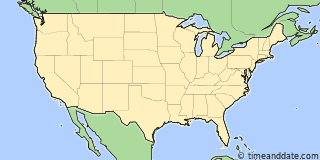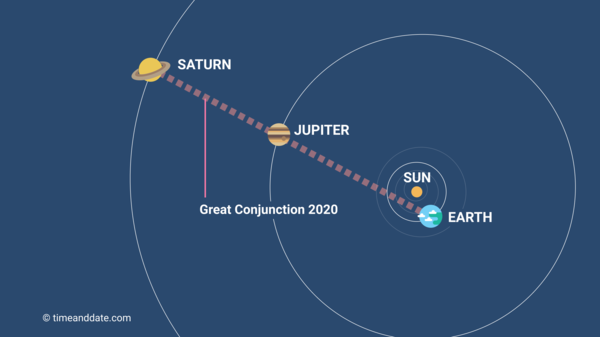| Night Time: | 14 hours, 54 minutes |
|---|---|
| Sunset: | Jan 6 at 4:55 pm |
| End of Twilight*: | Jan 6 at 6:03 pm |
| Start of Twilight*: | Jan 7 at 6:41 am |
| Sunrise: | Jan 7 at 7:49 am |

Jan 2025: See the Planets at Their Best
Venus is at its farthest distance from the Sun in the evening sky; Mars won’t be this bright again until February 2027; Venus and Saturn have a close approach on January 18. Read more about the planets this month.
Our Interactive Night Sky Map simulates the sky above Blue Earth. The Moon and planets have been enlarged slightly for clarity. On mobile devices, tap to steer the map by pointing your device at the sky. Need some help?
Tonight's Sky in Blue Earth, Jan 6 – Jan 7, 2025
Mercury rise and set in Blue Earth
Fairly close to the Sun. Visible only before sunrise and/or after sunset.
Mercury is just 19 degrees from the Sun in the sky, so it is difficult to see.
Tue, Jan 7 ↑6:34 am
Time:
Altitude: °
Direction: °
Venus rise and set in Blue Earth
View after sunset.
Venus can best be seen in the hours just after sunset. Visibility improves as the sunlight fades. Venus is visible by day, but may be hard to find.
Mon, Jan 6 ↓8:55 pm
Time:
Altitude: °
Direction: °
Mars rise and set in Blue Earth
Up most of the night.
Mars is roughly in the opposite direction of the Sun, so it is visible during most of the night.
Mon, Jan 6 ↑5:35 pm
Time:
Altitude: °
Direction: °
Jupiter rise and set in Blue Earth
After sunset and most of the night.
Jupiter is visible during most of the night, but it is best viewed in the late evening hours after sunset.
Tue, Jan 7 ↓5:25 am
Time:
Altitude: °
Direction: °
Saturn rise and set in Blue Earth
View after sunset.
Saturn can best be seen in the hours just after sunset. Visibility improves as the sunlight fades.
Mon, Jan 6 ↓9:49 pm
Time:
Altitude: °
Direction: °
Uranus rise and set in Blue Earth
View after sunset. Bring binoculars.
Uranus can be seen for more than 10 hours after sunset and during the late evening/early night. You may need binoculars.
Tue, Jan 7 ↓3:49 am
Time:
Altitude: °
Direction: °
Neptune rise and set in Blue Earth
View after sunset. Use binoculars.
Neptune can best be seen in the hours just after sunset. Visibility improves as the sunlight fades. Very faint, use binoculars.
Mon, Jan 6 ↓10:55 pm
Time:
Altitude: °
Direction: °
Planets Visible in Blue Earth
| Planetrise/Planetset, Mon, Jan 6, 2025 | ||||
|---|---|---|---|---|
| Planet | Rise | Set | Meridian | Comment |
| Mercury | Tue 6:34 am | Tue 3:29 pm | Tue 11:01 am | Slightly difficult to see |
| Venus | Mon 10:14 am | Mon 8:55 pm | Mon 3:34 pm | Great visibility |
| Mars | Mon 5:35 pm | Tue 9:03 am | Tue 1:19 am | Perfect visibility |
| Jupiter | Mon 2:21 pm | Tue 5:25 am | Mon 9:53 pm | Perfect visibility |
| Saturn | Mon 10:44 am | Mon 9:49 pm | Mon 4:17 pm | Average visibility |
| Uranus | Mon 1:17 pm | Tue 3:49 am | Mon 8:33 pm | Average visibility |
| Neptune | Mon 11:08 am | Mon 10:55 pm | Mon 5:01 pm | Very difficult to see |












